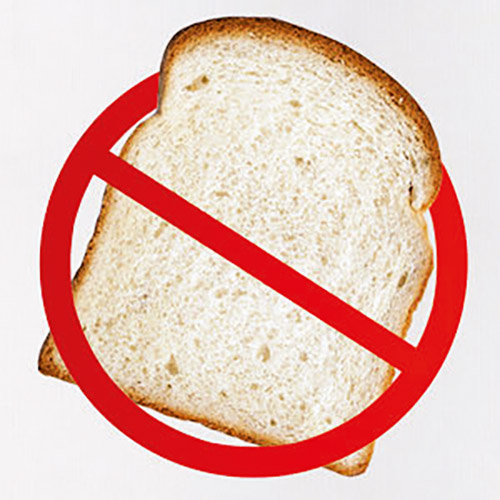
We devote much energy and time to eliminating chametz from our homes in preparation for Pesach. Three classic commentaries—Chazal, the Rambam and the Netziv—offer magnificent explanations.
Rambam: Destroying Avoda Zara
The Rambam (Moreh Nevuchim 3:46) suggests that the Torah forbids the offering of chametz on the Mizbei’ach because it is too similar to the pagan idolatrous practices of the time. We can similarly understand the eradication of chametz as a rejection of avoda zara. The rejection of avoda zara is most appropriate for Pesach, when we rejected the Egyptian gods.
There are many parallels between chametz and avoda zara, supporting the Rambam’s suggestion.
1. The prohibition of even owning chametz.
2. The requirement to eradicate it.
3. The prohibition not only of eating but of any manner of benefit from it.
4. Even the most minuscule particle is not nullified in a mixture.
These details apply to only two halachic substances: avoda zara and chametz. It does not apply to any other halachic prohibition. Hence, the connection between avoda zara—both in the Beit Hamikdash and on Pesach, the occasion in which we reject Egyptian modes of worship and align ourselves with Hashem—is straightforward.
Maybe this is why Chizkiyahu Hamelech and Yoshiyahu Hamelech timed their anti-avoda zara campaigns to coincide with Pesach; see Melachim II Perek 23 and Divrei Hayamim II Perakim 29-30.
Chazal: Conquering The Yetzer Hara
The Gemara (Brachot 17a) equates chametz with the yetzer hara:
“Rabi Alexandri would end his daily prayers with the following supplication: ‘Master of the Universe, You know full well that we desire to act according to Your will; but what prevents us from doing so? The yeast in the dough…’”
The Torah uses two terms to designate leaven. One term is “se’or,” the other is called “chametz.” What is the difference between them? Se’or is a leavening agent. It is a piece of old dough that has been allowed to reach a high level of fermentation. This is sometimes known as sourdough (or yeast). This substance is quite inedible, but when a piece of sourdough (se’or) is kneaded together with a mixture of flour and water it accelerates the rising process and creates “chametz.”
Rabi Alexandri sees “se’or” as a metaphor for the powerful drives and inflammatory passions within us. Our mind can distort the reality of our vision, inflate our desires and draw us in directions we would never take if we were to follow only our cold, rational side. The impulse to evil ferments and corrupts. It makes flour and water appear as soft, warm, enticing bread. Chametz is the evil inclination! The “yeast in the dough” allows us to lose self-control, which invites irrational decisions and leads us to impropriety.
This powerful metaphor of the yetzer hara explains well the impropriety of chametz in the Beit Hamikdash—for we stand before God in truth and sobriety. On Pesach as well we conquer and subdue the yetzer hara. Interestingly, the Torah tells us to offer chametz in the Beit Hamikdash on Shavuot. After defeating the yetzer hara on Pesach, we can channel the yetzer hara to the service of Hashem when we receive the Torah on Shavuot.
Netziv: Restraining Human Ingenuity
The Netziv (Ha’Emek Davar Vayikra 2:11) understands chametz in a very different direction. He suggests that the significance of chametz lies in the exercise of human control rather than the loss of it. He also explains why this law applies specifically to the Mizbei’ach and Pesach.
“As for leaven, ‘se’or’ is the human manipulation of the natural state of God’s universe. It is an exercise of human machination. Therefore, Hashem warns us not to use these in the Beit Hamikdash, as the nearer one finds oneself to Hashem, the less room there is for human ingenuity.”
He refers us to his commentary to Shemot 13:3, where he states:
“LEAVEN MAY NOT BE EATEN (on Pesach)… Matzah takes no advantage of the human technological ingenuity and creativity to allow man to raise the dough more than simple flour and water, which Hashem creates. Chametz is the epitome of human involvement in nature. Thus matzah is the symbol of the survival and ongoing existence of the Jewish people as we survive solely through the spirit of Hashem.”
The Netziv sees the raising agent (se’or) and its product, chametz, as an expression of human interference in nature. Conversely, matzah is an expression of the world controlled exclusively by Hashem. Man’s discovery that sourdough could cause bread to rise was a technological breakthrough in food technology, a classic human manipulation of the elements of nature. Most of the time, the Torah welcomed the advancement of civilization in this manner (see Bereishit 1:28). The Torah depicts this creativity and ingenuity as the “divine” in man, his “image of Hashem.” Not only God, but man, too, can create!
However, in a place where Hashem’s presence manifests itself most intensely—in the Beit Hamikdash—there is no place for man’s creative spirit. There man is dwarfed by Hashem. The Mizbei’ach is no place for human food technology. On the altar, we dedicate all the elements of Hashem’s world—the animal, vegetable and mineral—recognizing and demonstrating that God is their source. Chametz—the product of human manufacture—has no place on the Mizbei’ach. It would be presumptuous.
Similarly, on the festival of the miraculous birth of our nation, when an entire nation walked to their freedom away from a tyrannical regime without lifting a finger, we commemorate Hashem’s grandeur. He performed the 10 makkot, and we had no hand in them. At the Yam Suf, we stood huddled together, frightened, terrified in the face of the imposing Egyptian army. Moshe Rabbeinu instructed us; “Stand by and witness the deliverance that Hashem will work for you this day; for the Egyptians that you see today you will never see again. Hashem will battle for you; you hold your peace” (Shemot 14:13-14). We stood still, and Hashem saved the day.
Man had no part in the miracles of Yetziat Mitzrayim. We, therefore, commemorate this momentous event by refraining from contact with chametz. We abstain from human manipulation of our most basic commodity—bread. We proclaim that the very essence of our being comes wholly and directly from Hashem.
On Shavuot we bring chametz on the Mizbei’ach. Once we recognize Hashem’s control on Pesach, we exercise our role as junior partners with Hashem in developing the world on Shavuot.
A New Suggestion: Tzimtzum
Rav Yosef Dov Soloveitchik (in the last section of “Halachic Mind”) advocates a different approach to understanding mitzvah observance. He urges us to shift from asking why Hashem commands a particular mitzvah to reflecting on how we experience mitzvot. Hashem’s reasoning transcends ours (as emphasized by Yeshayahu HaNavi 55:8-9), and attempts to understand His reasoning will inevitably fall short. We are capable, though, of retrospectively discerning what we gain from our mitzvah observance.
On Pesach, observant homes have an added aura of purity and holiness. We may understand this sense based on the central kabbalistic concept known as “tzimtzum.”
For any relationship to flourish, each party must submit to certain limitations on his behavior. For example, in a successful marriage, one spouse does not unilaterally decide where to go and what to do during a vacation. Instead, decisions are made collaboratively, with each spouse compromising their desires for the sake of the other. Practically, making concessions to one another is not burdensome since the benefit from the relationship far outweighs any personal frustration caused by the need to compromise.
Hashem, surprisingly, also limits Himself for the benefit of others. The masters of Kabbalah teach that Hashem contracted Himself—for the world to exist—in a phenomenon known as “tzimtzum.” Because Hashem is infinite, He must minimize Himself for anything else to exist. He must also engage in tzimtzum for human beings to have free will. Thus, Hashem places limitations on Himself to allow us to live and thrive in His world.
Accordingly, it is reasonable for us to reciprocate this gesture and accept behavior limitations to create a space for Hashem in our lives. Just as a loving couple takes restrictions to create a healthy relationship, similar expectations apply to our bond with Hashem. The result is a satisfying, mutual exchange. We both engage in tzimtzum to create space for each other.
The result of our tzimtzum/limitations is holiness, granting space to Hashem to enter our lives and play a significant role. No wonder why Rashi (Vayikra 19:2) defines kedusha as separation. We generate kedusha by separating ourselves from certain physical indulgences.
The added sense of holiness and purity on Pesach stems from the added limitations we place on ourselves before and during Pesach. The complete removal of chametz makes our homes resemble the Beit Hamikdash, with its increased intensity of Hashem’s presence. The elimination of chametz from our homes makes more room for Hashem to reside in them. The result is the incomparable and palpable special feeling of Pesach.
Conclusion
Our hard work eliminating chametz before Pesach reaps immense rewards in the incomparable sense of hashra’at haShechina (Hashem’s Presence) during Pesach. No wonder we read from Sefer Vayikra, which focuses on the Mishkan and Beit Hamikdash, around the time of Pesach. Our great pre-Pesach efforts are crowned with the glorious presence of Hashem, the Melech Malchei HaOlamim.
Postscript
I thank Rav Alex Israel for permitting me to use (and modify) his presentation of the Rambam, Chazal and the Netziv that appears at https://www.alexisrael.org/pesach-psychology-of-hametz.
Rabbi Haim Jachter is the spiritual leader of Congregation Shaarei Orah, the Sephardic Congregation of Teaneck. He also serves as a rebbe at Torah Academy of Bergen County and a dayan on the Beth Din of Elizabeth.










